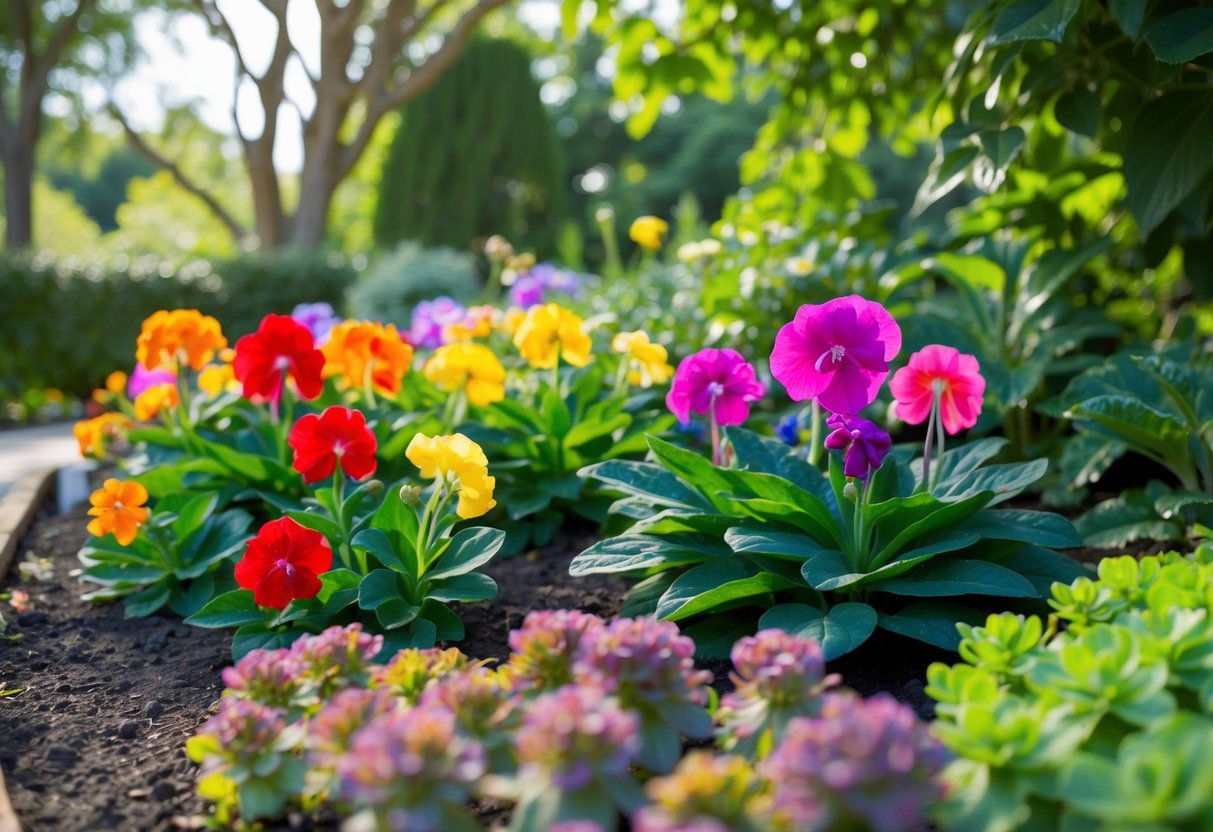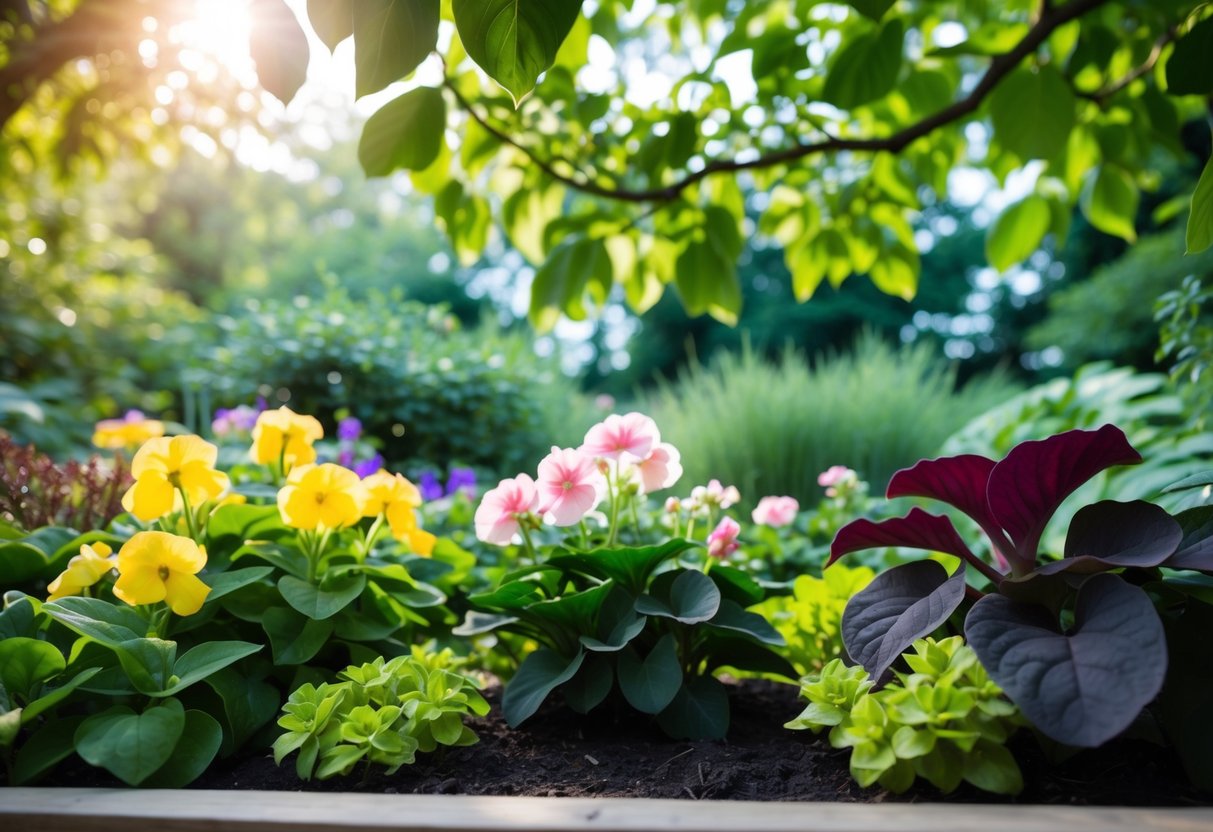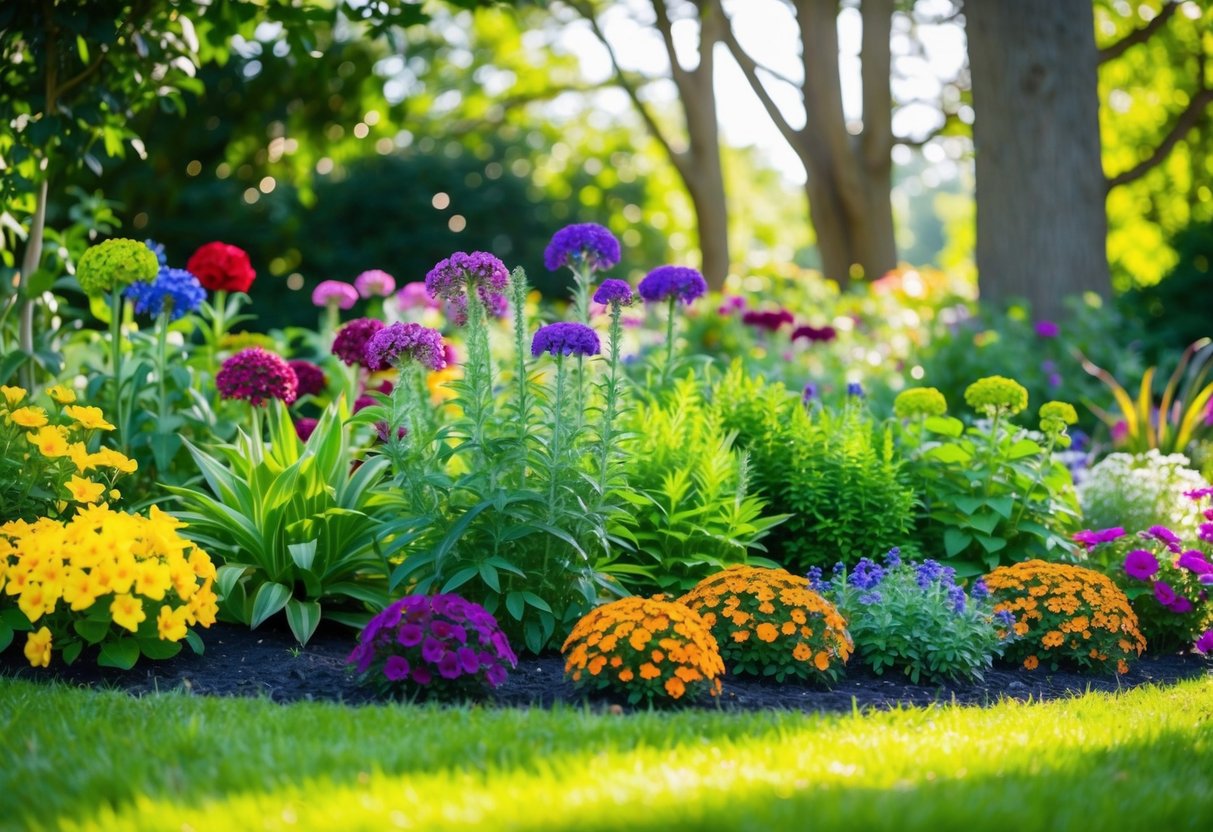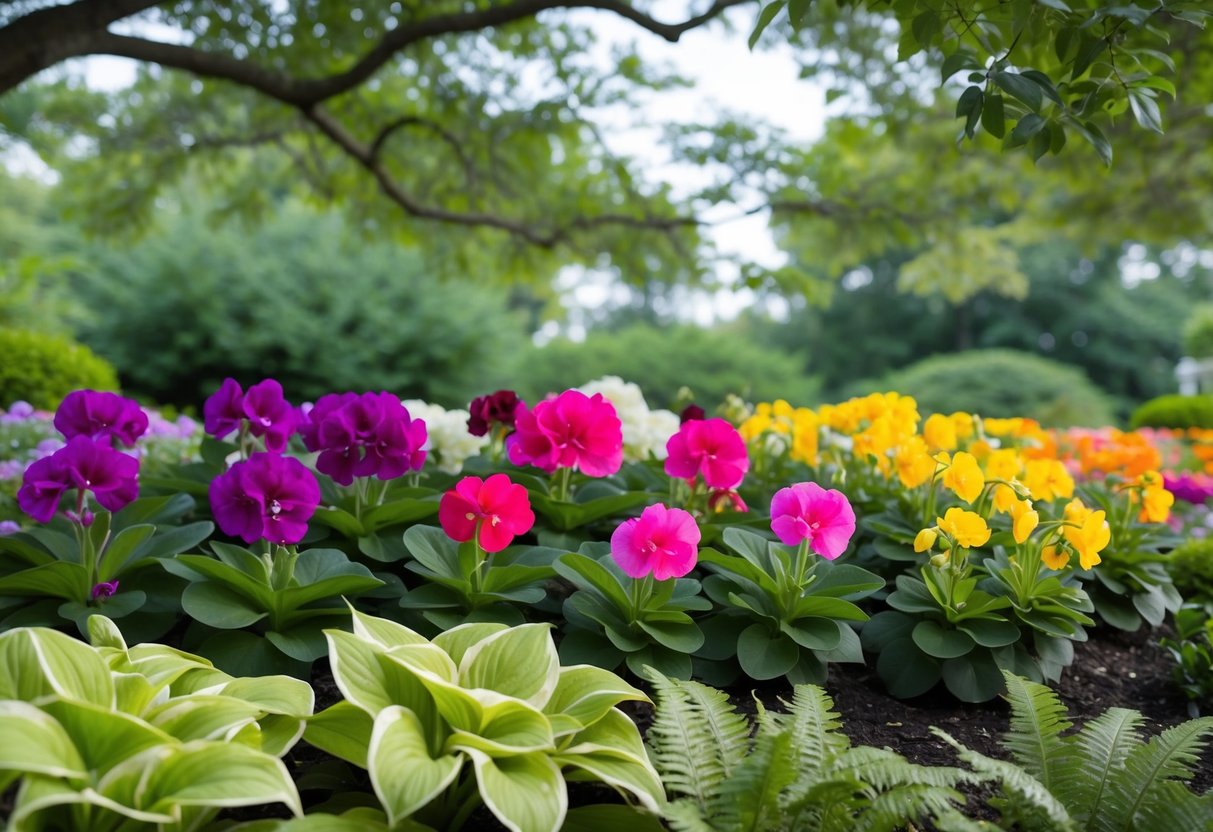What Annual Flowers Grow Best in Shade? Top Picks for Lush Gardens
If you have a shady garden, don’t worry about missing out on vibrant blooms. Plenty of annual flowers thrive in the shade, bringing color and life to those less sunny spots. One standout option is impatiens. Impatiens flourish without much sunlight and offer bright, cheerful blooms in a variety of colors. Other shade-loving plants to consider include lobelia and begonias, both known for their stunning displays even with limited sun exposure.

Having a shady garden doesn’t mean you have to miss out on vibrant blooms. There are plenty of annual flowers that thrive in the shade, bringing color and life to those less sunny spots. One standout option is impatiens, which flourish without much sunlight and offer bright, cheerful blooms in a variety of colors. Other shade-loving plants to consider include lobelia and begonias, both known for their stunning displays even with limited sun exposure.
When selecting flowers for shade, consider your garden’s specific conditions, like how much moisture the area receives. Some plants, such as sweet alyssum, prefer partial shade and can carpet your space with delightful blooms. For those looking to add texture and color, coleus is a great choice with its vivid leaves, making it a perfect addition to a shady spot.
Some plants, such as sweet alyssum, prefer partial shade and can carpet your space with delightful blooms. For those looking to add texture and color, coleus is a great choice with its vivid leaves, making it a perfect addition to a shady spot.
Experimenting with different plants can lead to surprising and beautiful results in your garden. With a little planning, you can create a lush oasis that thrives in various lighting conditions. Now let’s explore more about which annuals are best suited for your shady garden spots.
Understanding Shade in Gardening

When you’re growing annual flowers in the shade, it’s essential to know the types of shade: full, partial, and light. Different plants have varied light needs, and understanding these can help your garden thrive.
Defining Full and Partial Shade
Full shade means the area receives very little to no direct sunlight. This typically occurs under dense trees or on the north side of buildings. In these areas, you’ll want to focus on plants that can tolerate low light.
Partial shade refers to areas that get around 3 to 6 hours of direct sunlight each day. This light is often morning or late afternoon sun, which is less intense. In partial shade, many annuals can survive and even flourish. Consider fuchsias or begonias, which do well with some sunlight but prefer cooler parts of the day.
Full shade means the area receives very little to no direct sunlight. This typically occurs under dense trees or on the north side of buildings. In these areas, you’ll want to focus on plants that can tolerate low light.
Partial shade refers to areas that get around 3 to 6 hours of direct sunlight each day. This light is often morning or late afternoon sun, which is less intense. In partial shade, many annuals can survive and even flourish. Consider fuchsias or begonias, which do well with some sunlight but prefer cooler parts of the day.
Understanding these terms helps you choose the right plants for each section of your garden. This knowledge ensures that your effort in planting annuals is rewarded with a lush, colorful display.
Importance of Light Shade for Annuals
Light shade provides filtered or dappled sunlight. This can occur beneath trees with thin canopies. Many annuals thrive in these conditions because it allows them to get some sunlight without overheating.
For example, impatiens are great options for light shade. They enjoy the softer light and can still produce vivid blooms throughout the summer. Using hanging baskets or planters in these areas can also give exposure to more sunlight as the day progresses.
Light shade provides filtered or dappled sunlight. This can occur beneath trees with thin canopies. Many annuals thrive in these conditions because it allows them to get some sunlight without overheating.
For example, impatiens are great options for light shade. They enjoy the softer light and can still produce vivid blooms throughout the summer. Using hanging baskets or planters in these areas can also give exposure to more sunlight as the day progresses.
Understanding light shade’s role in your garden helps maintain a balance between sun and shadow. This balance is crucial for annual flowers that need more gentle conditions to thrive.
Choosing the Right Shade-Loving Annuals

When planning a garden in a shady spot, it’s important to select flowers that thrive in low light. These plants will not only grow well but can also brighten up areas that don’t get much sun.
Best Annual Flowers for Shady Areas
When you’re looking for flowers that do well in the shade, consider shade annuals like impatiens, begonias, and lobelia.
Impatiens are known for their lush foliage and colorful blooms in shades of pink, red, and white. They are excellent for mass planting and provide long-lasting color throughout the summer.
Begonias are another great choice. They’re known for their variety of colors, including pink, red, and white, and they often feature interesting leaf patterns. Some varieties of begonias are also toxic to animals, so be cautious if you have pets.
Lobelia, a trailing plant with small blue or white flowers, can add a delicate touch to your garden. It blooms prolifically, especially in cooler seasons. These plants are ideal for hanging baskets or as a ground cover, adding a soft, colorful touch to shady spots.
Annuals with Vibrant Blooms for Low Light
For vibrant blooms in shaded areas, consider torenia, coleus, and fuchsia.
Torenia, also known as the wishbone flower, thrives in the shade and produces blue, purple, or white flowers with a unique, wishbone-shaped stamens.
Coleus is well-loved for its bright foliage rather than its flowers. With leaves in shades of red, green, yellow, and even purple, coleus can add a bold splash of color to any shady location in your garden.
Fuchsia offers stunning, pendulous blooms that are excellent for hanging baskets and shaded garden beds. Their vibrant pink and purple flowers can attract hummingbirds to your garden while thriving in less sunny spots.
These plants will transform your shaded spaces into vibrant areas full of life and color.
Special Considerations for Shade Gardens

When planning a shade garden, focus on soil quality, moisture levels, temperature, and appropriate hardiness zones. These factors help ensure your annual plants thrive.
Soil and Moisture for Shade-Loving Flowers
In a shade garden, soil plays a key role. Well-drained soil is important because many annual plants do not like soggy roots. You can improve drainage by adding organic matter like compost. This not only helps drainage but also boosts soil fertility.
Moisture levels need careful monitoring. Shade gardens might retain moisture longer, so it’s important not to overwater. Keep an eye on how quickly your soil dries out. Mulching can help maintain moisture levels while also keeping the soil temperature stable.
Temperature and Hardiness Zones for Annuals
Understanding temperature and hardiness zones is essential when choosing annual plants for a shade garden.
Shade gardens might be cooler than sunnier spots, which can affect plant growth. Some annuals prefer cooler temperatures and can benefit from the shade.
Make sure to check the proper hardiness zones for the annuals you plan to grow. For example, begonias thrive in growing zones 10-11 but are treated as annuals elsewhere. Knowing this can help you pick plants that are more likely to thrive in your conditions.
Designing with Shade-Loving Annuals

Designing with shade-loving annuals brings vibrant life to areas often overlooked in gardens. Focus on using colorful flowers and textured foliage to make bold statements. Consider combining different plants in hanging baskets and containers to add depth and charm.
Creating Impact with Flower Color and Texture
In shaded spots, you can use bright flowers like begonia and the vibrant polka dot plant to catch the eye. Their bold colors—red, pink, or white for begonias and speckled leaves for polka dot—can brighten any dim corner. Combine them with the lush, varied greens of plants like the caladium or whimsical sweet potato vine.
Texture plays an essential role in plant design. The smooth leaves of caladiums create an elegant contrast with the textured foliage of sweet potato vine. Mixing different textures and colors adds a dynamic look to your garden. When selecting plants, consider how different shapes and sizes can complement each other, adding interest and depth.
Arranging Plants in Hanging Baskets and Containers
Hanging baskets and containers offer versatile options for showcasing shade annuals.
Use trailing plants like the sweet potato vine to create cascading effects. This trailing habit makes them ideal for hanging displays. Pair them with upright growers like begonia to provide height and structure to your arrangement.
Try adding contrasting colors with the polka dot plant. The small size of these plants suits containers perfectly, while their colorful leaves catch attention. Mixing different plants in a single basket creates layers of color and texture. Use various container sizes and heights to bring a sense of dimension and visual interest to your garden spaces.
Plant Profiles: Popular Annuals for Shade

If you’re looking to brighten up shady spots in your garden, certain annuals stand out for their ability to thrive without direct sunlight. Impatiens offer a variety of hues, begonias adapt to different shady conditions, and coleus provides vibrant foliage.
Impatiens and Their Varieties
Impatiens are a favorite for shady gardens due to their vibrant blooms. They come in colors like pink, red, and white. These flowers prefer moist, well-drained soil. New Guinea impatiens are a popular choice, known for their larger flowers and resistance to pests.
Adding impatiens can easily transform a shaded area with continuous color. You can also experiment with impatiens spp for more diverse options.
Begonia: A Versatile Shade Lover
Begonias are renowned for their waxy leaves and bright, showy flowers. They thrive both in pots and garden beds, contributing hues like red, pink, and white. Varieties such as wax begonia and rex begonia endure well in the shade.
Begonias fit perfectly into any low-maintenance garden plan. They’re not just beautiful but practical, adapting to different shady conditions. Make sure to watch out for their potential toxicity to pets.
Coleus: Foliage to Brighten Dark Spaces
Coleus brings a pop of color to dark spaces with its stunning foliage. The leaves range in color from vibrant green to rich burgundy. For the best growth, you should plant them in well-draining soil with plenty of water.
Coleus excels at adding interest to your garden with distinct leaf shapes and patterns. It’s a fantastic option for shaded corners. Consider varieties like Persian shield or tradescantia pallida for unique textures. This plant is easy to care for, making it a great choice if you want low worry and high impact.







